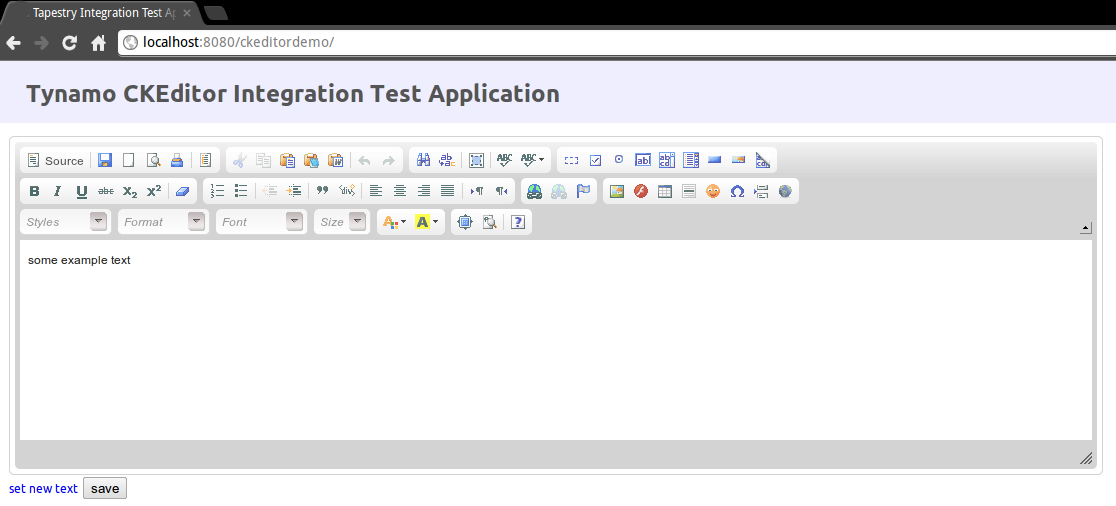Global configuration: Changes of the CKEDITOR.config object are reflected in all editor instances, if not specified otherwise for a particular instance. the configuration can be made in a separate js file that is used by setting the CKEDITOR.config.customConfig property. Example:
CKEDITOR.editorConfig = function( config )
{
// Define changes to default configuration here. For example:
config.toolbar = 'Basic';
};
<t:form>
<t:textarea t:mixins="tynamo/ckeditor" parameters="prop:CKEditorParameters" />
</t:form>
public class MyPage
{
@Inject
@Path("config.js")
private Asset config;
public Map<String, Object> getCKEditorParameters()
{
Map<String, Object> map = new HashMap<String, Object>();
map.put("customConfig", config.toClientURL());
return map;
}
}
